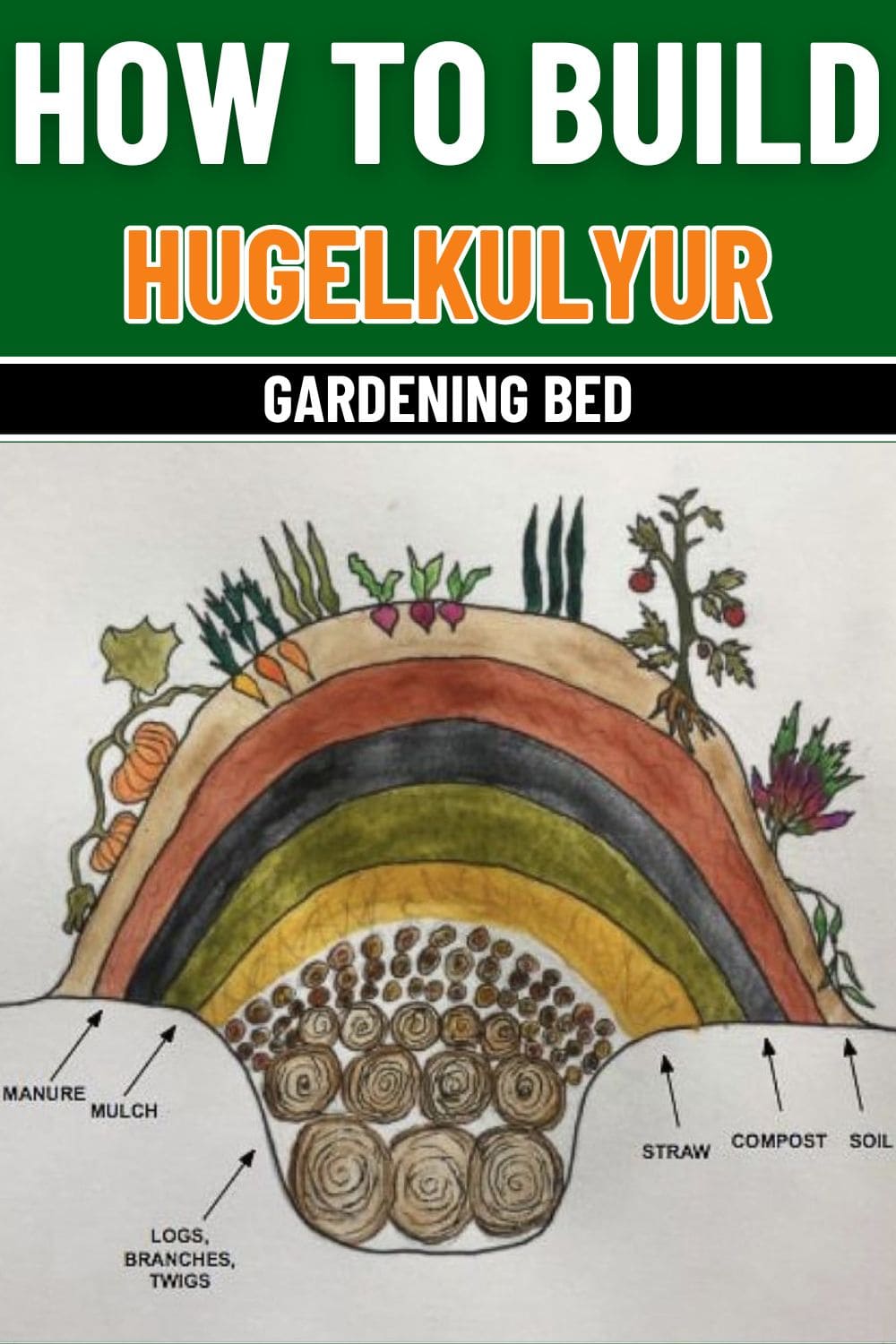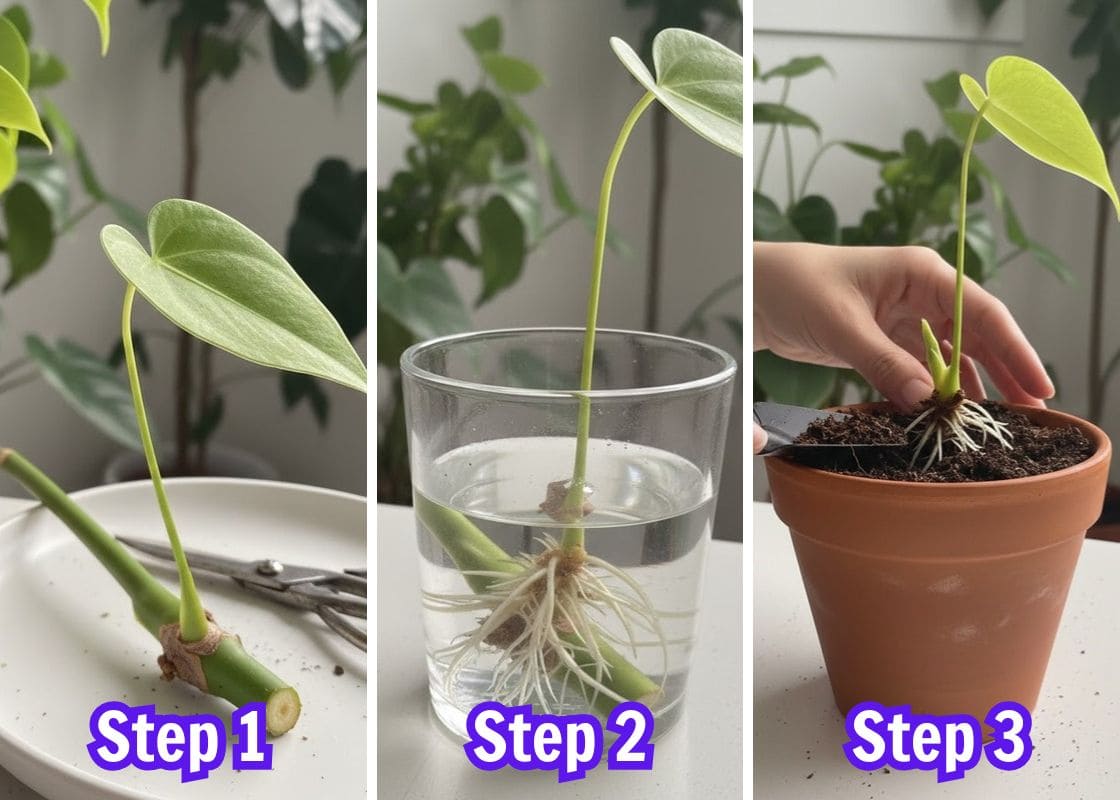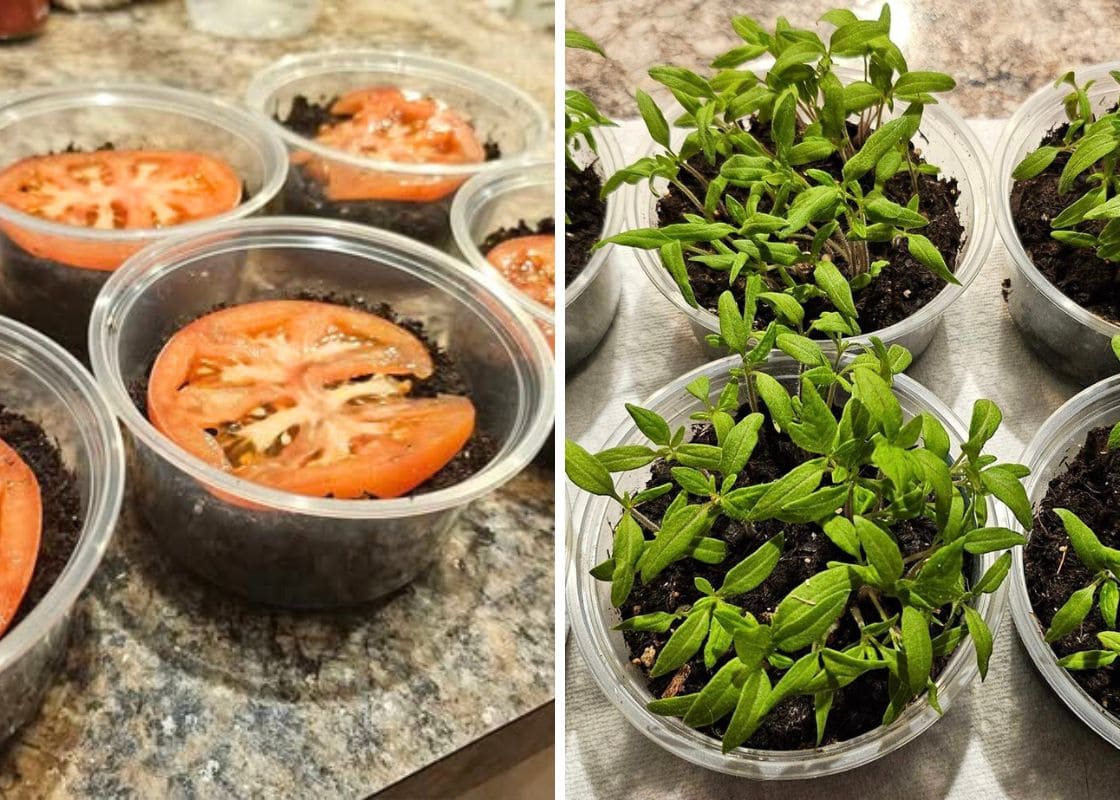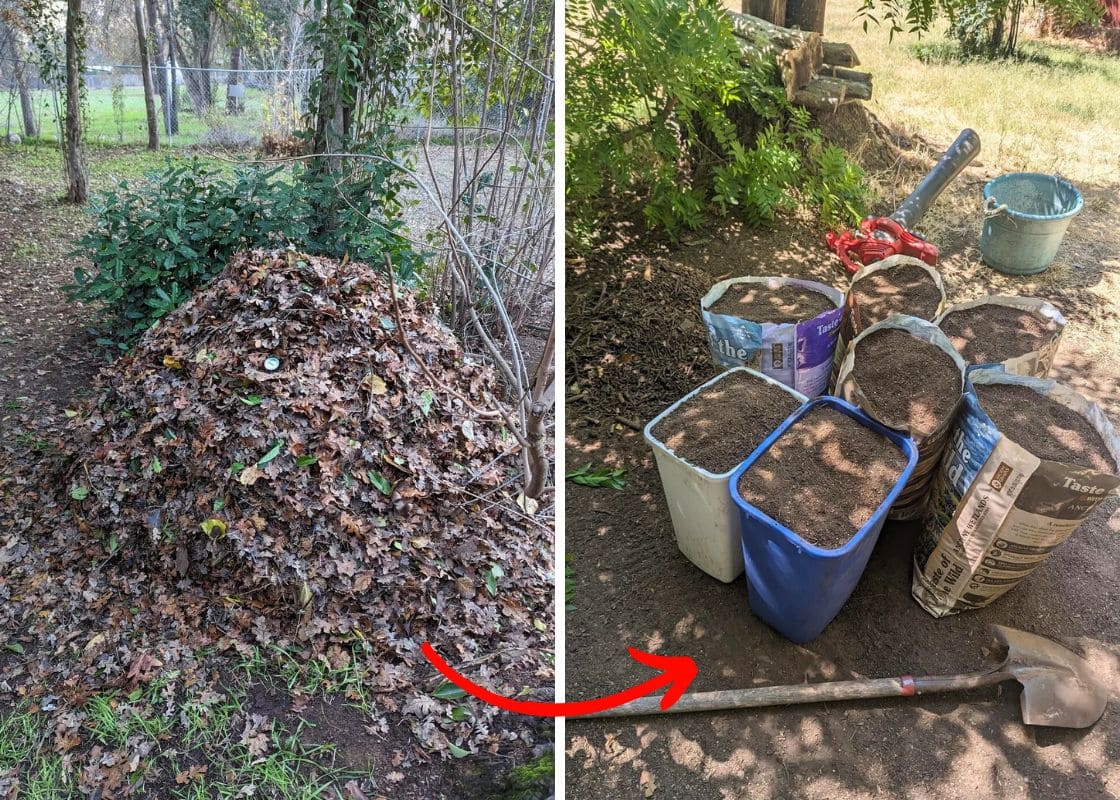In a world overflowing with quick fixes and chemical solutions, more and more gardeners are finding themselves drawn back to the old ways,
the slower, wiser methods that worked long before garden centers and synthetic fertilizers took over. Hugelkultur is one of those time-honored techniques. Rooted in European tradition, it’s simple, sustainable, and quietly brilliant.
Imagine building a garden bed from what you already have like fallen branches, grass clippings, leaves, and logs and watching it turn into a rich, moisture-holding, self-feeding haven for plants.
No fancy tools, no complicated formulas, just a deep respect for how nature nourishes itself. If you’ve ever struggled with dry, depleted soil or endless upkeep, Hugelkultur might just become your favorite way forward by looking back.
What Is Hugelkultur?
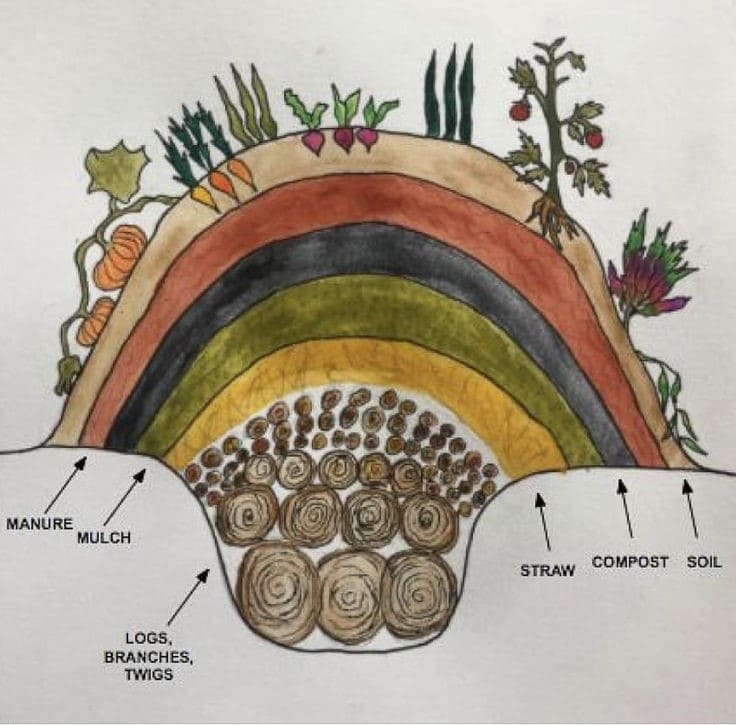
Hugelkultur, pronounced “hoo-gul-culture”, is an old German practice that translates roughly to mound culture.
You think of it as composting in place, where you bury logs, sticks, leaves, and compostable materials beneath a mound of soil to create a self-sustaining raised bed.
What makes this special is that as the wood decomposes, it releases moisture and nutrients slowly over time.
Hugelkultur mimics natural forest ecosystems, where fallen trees feed fungi, soil microbes, and plants for decades. Modern permaculture designers swear by it, and for good reason, it’s regenerative, low-input, and deeply practical.
Why Hugelkultur Works So Well
In this method, Rotting wood acts like a sponge, slowly absorbing rain and then releasing it during dry periods. This means you can reduce your watering by up to 50–70%, especially in dry climates.
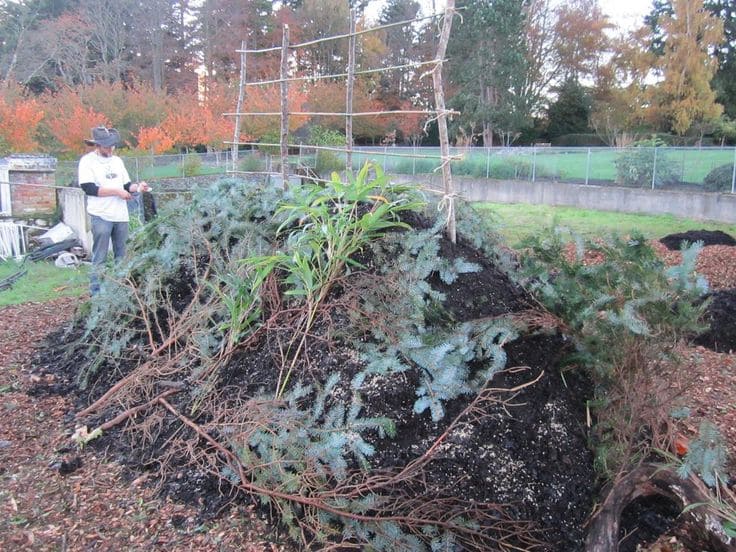
A 2016 study in Ecological Engineering observed that decaying organic matter like wood boosts microbial biomass and water retention, improving the structure and health of soil over time.
The porous layers in Hugelkultur also promote air flow, which keeps roots happy even during long stretches of rain.
But beyond the science, you’ll notice this with your own eyes that plants rooted in Hugelkultur mounds grow more robust, stay greener longer, and tend to bounce back from stress faster.
I’ve grown tomatoes that hardly blinked during a summer drought, thanks to the buried wood below.
How to Build a Hugelkultur Bed
Step 1: Choose Your Spot
You should go for full sun if possible. Slight slopes work beautifully because they drain well.
Raised beds should be at least 2–3 feet tall, but even smaller versions can succeed.
Step 2: Start with Logs and Branches
Layer thick logs or stumps at the base. You need to avoid black walnut as it’s toxic to many plants, cedar which is too slow to break down and any pressure-treated wood.
Also, you can use whatever hardwoods are available like alder, maple, oak, or old fruit tree limbs work great.
Step 3: Add Layers of Organic Matter
Top the logs with branches, leaves, straw, grass clippings, old compost, and even food scraps.
Step 4: Cap with Soil or Compost
Add 6-12 inches of topsoil or rich compost. This is the layer your plants will dig into during their first year.
Additionally, mulch with straw or shredded leaves to reduce evaporation.
Step 5: Water Well and Plant
Now, you soak the mound deeply at first. Then plant right into it or let it sit for a few weeks if you’re starting in fall or early spring.
Tip: Hugelkultur beds settle over time. So, don’t panic as that’s the system working, you just top it off with compost each year as needed.
What Can You Grow In Hugelkultur Beds?
You can grow different crops based on the bed’s stage of decomposition.
In Year 1, go for shallow-rooted or fast-growing crops like: lettuce, beans, kale and radishes.
In Year 2 and beyond, you can switch to heavy feeders or deep-rooted plants: tomatoes, squash, peppers, corn, rhubarb and even asparagus.
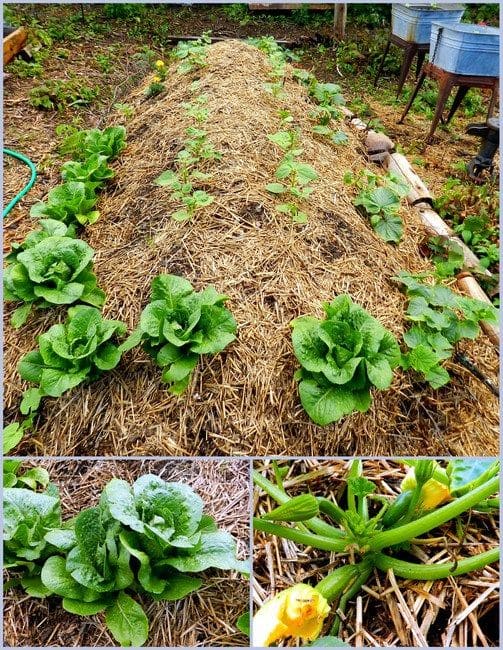
Because Hugelkultur retains so much water, it’s especially useful in arid zones or places where summer rain is unreliable.
And if you’re dealing with sandy or clay-heavy soils, the mound’s internal structure helps correct compaction and boost fertility naturally.
Bonus Benefits of Hugelkultur
One of the most immediate joys of Hugelkultur is how quickly it transforms your garden waste into a nurturing powerhouse.
All those fallen branches, pruned limbs, and raked-up leaves that might otherwise be hauled away suddenly become building blocks for something regenerative.
You’ll find yourself looking at your yard debris differently—not as clutter, but as compost in waiting.
The elevated mound structure naturally suppresses weeds, giving you fewer hours on your knees pulling intruders. It also helps with drainage during heavy rains, while holding on to water during droughts.
And because Hugelkultur beds warm up earlier in spring, you’ll often get a head start on planting, sometimes by a few precious weeks. That warmth, combined with improved microbial life and structure, means your soil gets richer with time, not poorer.
Here’s What to Watch For
While Hugelkultur is low-maintenance once it’s established, it’s not completely hands-off.
In the beginning, you might notice a bit of nitrogen deficiency, especially if your wood is very fresh. That’s because the decomposing wood temporarily pulls nitrogen from the surrounding soil.
The solution is simple, you just add a layer of nitrogen-rich material like aged manure, fresh grass clippings, or high-quality compost right around your plants.
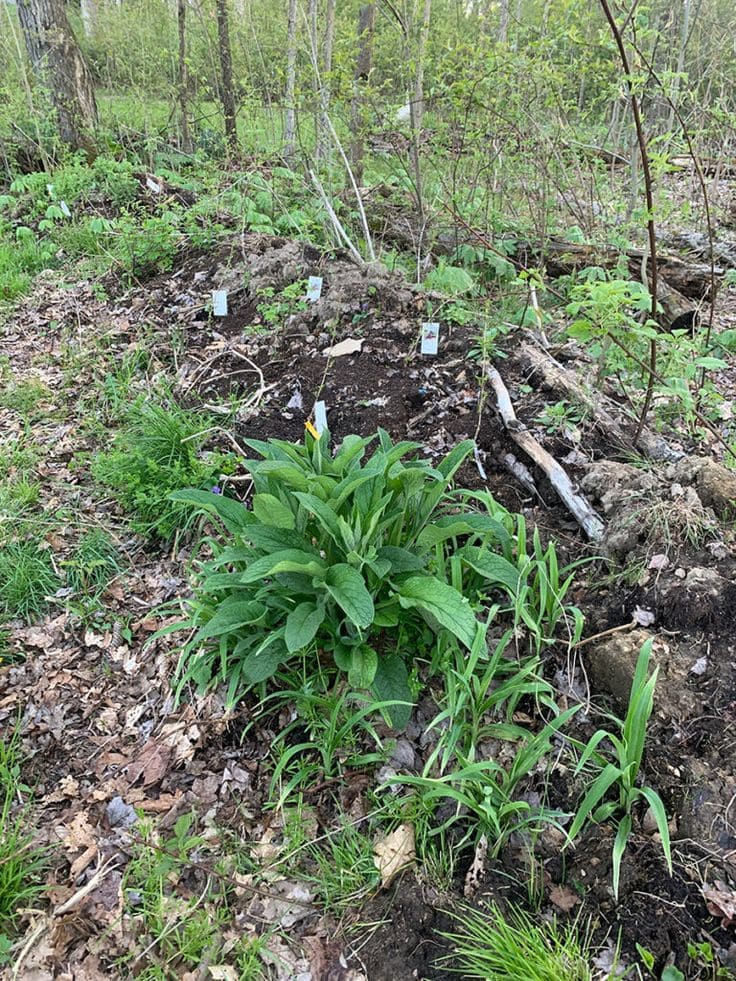
Another thing to expect is settling. As the materials break down, the height of your mound will shrink. This is completely normal and actually a sign that everything is working as it should.
You can top off your bed with a bit of compost or mulch each year to maintain your growing space. Steeper mounds may also erode slightly in the first few rains, so consider planting ground covers or edging the bed with stones, logs, or woven branches for stability.
Now, let’s talk about wood. Hardwoods like alder, maple, oak, apple, and birch are ideal. They break down at a steady rate and don’t interfere with plant health.
Softwoods like pine and fir are usable too, though they decompose faster and can acidify the soil slightly in the early months something to be mindful of if you’re planting sensitive crops.
On the do not use, list are black walnut which contains juglone, toxic to many plants, eucalyptus, and any pressure-treated or painted wood, which may leach harmful chemicals into your soil.
So how long will your Hugelkultur bed last? That depends on the wood used and the climate.
In general, a well-constructed mound with good-sized logs at its base can provide fertility and structure for five to ten years or more.
Over time, as the wood fully decomposes, the bed essentially turns into a rich, spongy, living compost heap.
